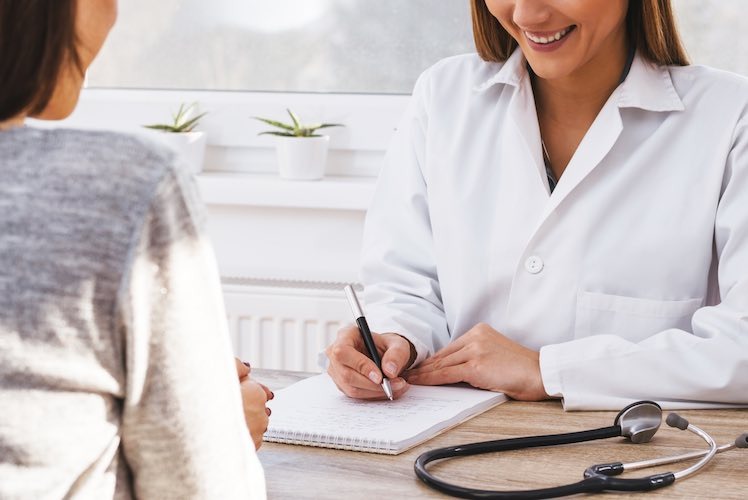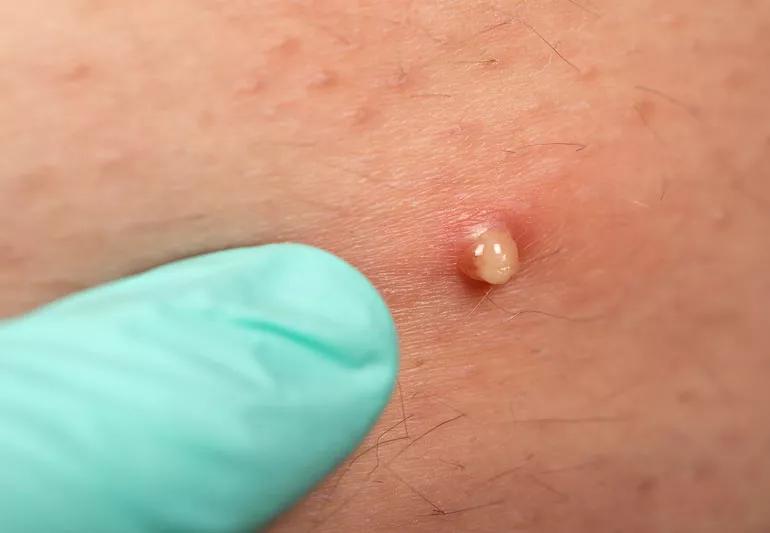Skin irritation and breakouts in covered areas of the body, such as the buttocks, are much more common than most people think. Although many people may feel embarrassed to talk about it, pimples in this region can cause discomfort, affect confidence, and sometimes signal underlying health issues. Unlike facial acne, which is widely discussed and often treated early, pimples on the buttocks are often ignored or self-treated without medical guidance. Over time, this can lead to prolonged discomfort, dark marks, or scarring. The good news is that understanding the causes, knowing effective treatment methods, and applying preventive steps can greatly reduce the risk of recurrence. This article explores the condition in detail, covering causes, treatment, prevention, and answers to frequently asked questions.
1. Causes of Pimples on the Buttocks

The skin in this area is typically covered most of the day by clothing. This creates an environment where sweat, oil, and bacteria may become trapped, leading to irritation. When pores are blocked, bumps can form.
1.1 Skin Conditions
The most common medical explanation is folliculitis, an inflammation of hair follicles. Folliculitis often appears as small red bumps that may be itchy or tender. It is triggered by friction from tight clothing, heat, or prolonged sitting. Another condition is keratosis pilaris, which causes small rough patches and can be mistaken for acne. Less frequently, larger inflamed bumps may appear due to bacterial infections, especially if the skin has been irritated by shaving or scratching.
1.2 Hormonal Changes
Hormonal fluctuations can increase oil production in the skin. Women may notice flare-ups during menstrual cycles, pregnancy, or other times when hormones shift. Men may also experience breakouts during times of hormonal imbalance or increased stress.
1.3 Lifestyle and Diet
A diet high in greasy or overly processed foods can influence the body’s ability to regulate oil production. Excessive sugar intake has been linked with higher inflammation in the skin, while insufficient intake of fruits, vegetables, and hydration can worsen flare-ups.
1.4 Hygiene and Clothing Habits
Wearing tight synthetic clothing for long periods traps heat and sweat, creating an ideal environment for irritation. Not changing into dry clothes after exercising can also contribute to clogged pores.
1.5 Other Factors
Genetics play a role, meaning people with a family history of persistent skin bumps may be more prone. Stress and lack of sleep also affect the body’s balance, which can trigger flare-ups. Prolonged sitting, especially on hard surfaces, increases friction and pressure, contributing to irritation.
2. Treatment Options

2.1 When to See a Doctor
If bumps become painful, spread quickly, or do not improve after basic self-care, it is important to see a healthcare professional. Dermatologists can determine whether the issue is folliculitis, acne, or another condition such as fungal infection. Early professional care prevents complications and reduces scarring.
2.2 At-Home Care for Mild Cases
Mild cases can often be managed with proper hygiene and over-the-counter products. Steps include cleansing the area with gentle, non-fragranced washes, avoiding long periods of sitting on hard chairs, and choosing loose, breathable clothing. Applying mild antiseptic solutions, such as diluted iodine or saline, may reduce irritation. Products containing salicylic acid or benzoyl peroxide can also help by keeping pores clear. However, these should be used carefully, as harsh products may irritate sensitive skin. Importantly, avoid squeezing or attempting to pop the bumps at home. This can increase the risk of infection and worsen irritation.
2.3 Medical Treatments
For persistent cases, dermatologists may prescribe topical creams with antibacterial or anti-inflammatory properties. In some situations, oral medication may be necessary. Vitamin supplements such as B-complex and vitamin C are sometimes recommended to support overall skin health. If folliculitis is diagnosed, targeted treatment against bacteria or fungi may be prescribed. Each case is unique, so professional consultation is essential.
3. Prevention Tips
Prevention is often easier than treatment. By making a few adjustments in daily life, the chances of developing pimples on the buttocks can be reduced.
3.1 Shower After Exercise
After exercise, sweat and oils build up on the skin. Showering within 20–30 minutes helps remove these irritants and keeps pores clear. If showering immediately is not possible, changing into dry clothing is better than staying in damp workout attire.
3.2 Choose the Right Clothing
Breathable fabrics like cotton allow air circulation and reduce friction. Tight synthetic clothing should be limited, especially during workouts or hot weather.
3.3 Skin Care Routine
Moisturize the skin with products that contain lactic acid or other gentle exfoliating agents. This helps keep skin hydrated and smooth without clogging pores. Regular exfoliation with glycolic acid or mild scrubs can prevent buildup of dead skin cells. Avoid harsh scrubbing, which may worsen irritation.
3.4 Healthy Diet and Hydration
Limiting greasy, overly sweet, or spicy foods can help maintain balance. A diet rich in vegetables, fruits, and lean proteins supports skin health. Drinking enough water is also crucial for flushing out toxins and maintaining hydration.
3.5 Stress Management
Stress can trigger hormonal imbalances and skin flare-ups. Practices such as meditation, exercise, and adequate sleep contribute not only to overall health but also to clearer skin.
4. When to Seek Professional Help
While many cases are mild, some signs indicate that medical advice is needed. Seek help if you notice persistent bumps lasting several weeks, irritation that spreads beyond the initial area, severe pain or itching, or scarring and dark marks that do not fade. A dermatologist can recommend treatments tailored to your situation, which may include topical creams, oral medication, or lifestyle adjustments.
5. Frequently Asked Questions

Q1: Are pimples on the buttocks the same as acne?
Not always. While they may look similar, many bumps in this area are actually folliculitis or keratosis pilaris, not true acne. A dermatologist can confirm the cause.
Q2: Can poor hygiene alone cause this problem?
Hygiene plays a role, but it is not the only factor. Genetics, diet, stress, and hormones also influence whether pimples appear.
Q3: Are natural remedies effective?
Some people use natural remedies such as aloe vera gel or tea tree oil. While they may soothe irritation, results vary. It is always best to consult a doctor before trying new treatments.
Q4: Can sitting for long hours cause breakouts?
Yes. Prolonged sitting creates heat and friction, which may irritate the skin. Taking breaks to stand and stretch can reduce the risk.
Q5: Do pimples on the buttocks always leave scars?
Not always. Mild cases often heal without marks, but repeated irritation or improper handling may lead to dark spots or scars. Using sunscreen on exposed skin and gentle products can help fade marks faster.
Q6: Can exercise make the problem worse?
Exercise itself is not the cause, but sweat and tight workout clothes can trigger irritation if hygiene is neglected afterward. Showering promptly and changing into clean clothes can prevent flare-ups.
Q7: Is this condition contagious?
In most cases, no. Pimples caused by clogged pores or folliculitis are not contagious. However, if bumps are due to certain bacterial or fungal infections, medical evaluation is needed.
Final Thoughts
Pimples on the buttocks are a common issue that many people experience at some point in life. While often harmless, they can cause discomfort and reduce self-confidence if ignored. The keys to managing this condition include understanding its causes, practicing good hygiene, wearing appropriate clothing, maintaining a healthy diet, and managing stress. Most mild cases improve with simple self-care, but persistent or painful bumps should be evaluated by a healthcare professional. By taking preventive measures and seeking medical advice when necessary, you can keep your skin healthier, reduce discomfort, and prevent long-term complications.

